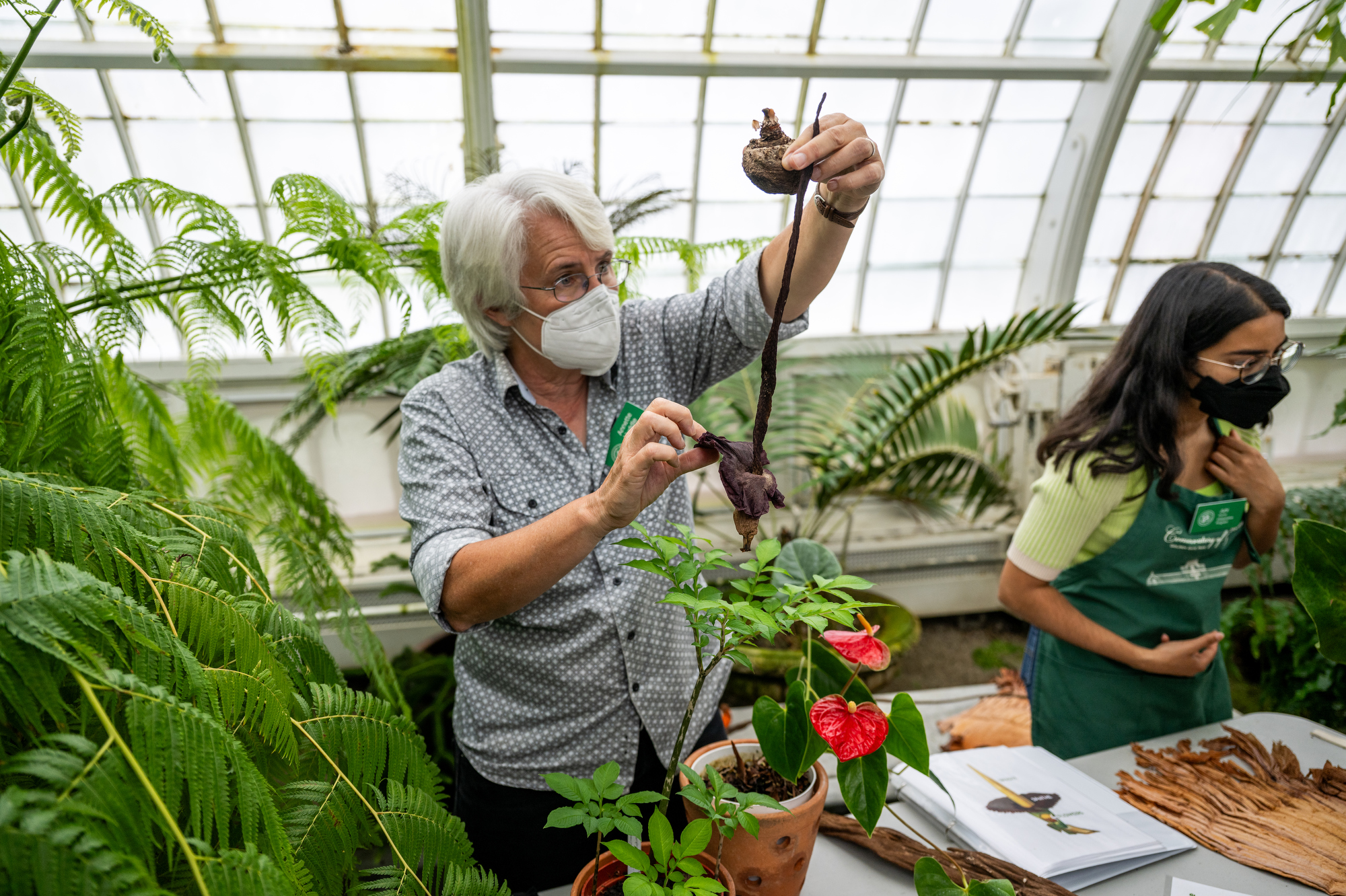Chanel is part of a larger conservation effort among botanical gardens worldwide to preserve corpse flowers.
Chanel follows in the footsteps of other famous Conservatory blooms, including Scarlet in 2023 and Mirage in 2024, which the conservatory gifted to the California Academy of Sciences in 2017.
Corpse flowers are the largest and most “pungent inflorescence,” a term used to describe a cluster of flowers. They only bloom once every three to five years. And when they do, their stench is rancid. People have likened the smell of the bloom to wet socks and dead animals.
The corpse flower has a tall central spike, called a spadix, which actually heats up and helps diffuse the smelly odor into the air. A petal-like structure, known as the spathe, surrounds the spadix. The spathe is green on the outside and a deep red, almost burgundy color on the inside. And that’s supposed to resemble rotting flesh.
 Staff explain the corpse flower to visitors during a viewing opportunity for a corpse flower in bloom at the Conservatory of Flowers in San Francisco on July 9, 2025. (Beth Laberge)
Staff explain the corpse flower to visitors during a viewing opportunity for a corpse flower in bloom at the Conservatory of Flowers in San Francisco on July 9, 2025. (Beth Laberge)
That “rotting flesh” and the strong odor are ways the corpse flower tricks pollinators into visiting. It’s called a deceptive pollination strategy.
These flowers are native to the islands of Sumatra in Indonesia. In fact, the name of the flower is a direct translation of the words “bunga bangkai,” which in Bahasa Indonesia translates to “corpse flower.”
Only a few thousand corpse flowers are remaining in the wild in Indonesia and neighboring regions, and they’re considered threatened and endangered.
Botanical gardens around the world — including the Conservatory of Flowers in San Francisco — are part of a large conservation effort to preserve these corpse flowers.


















